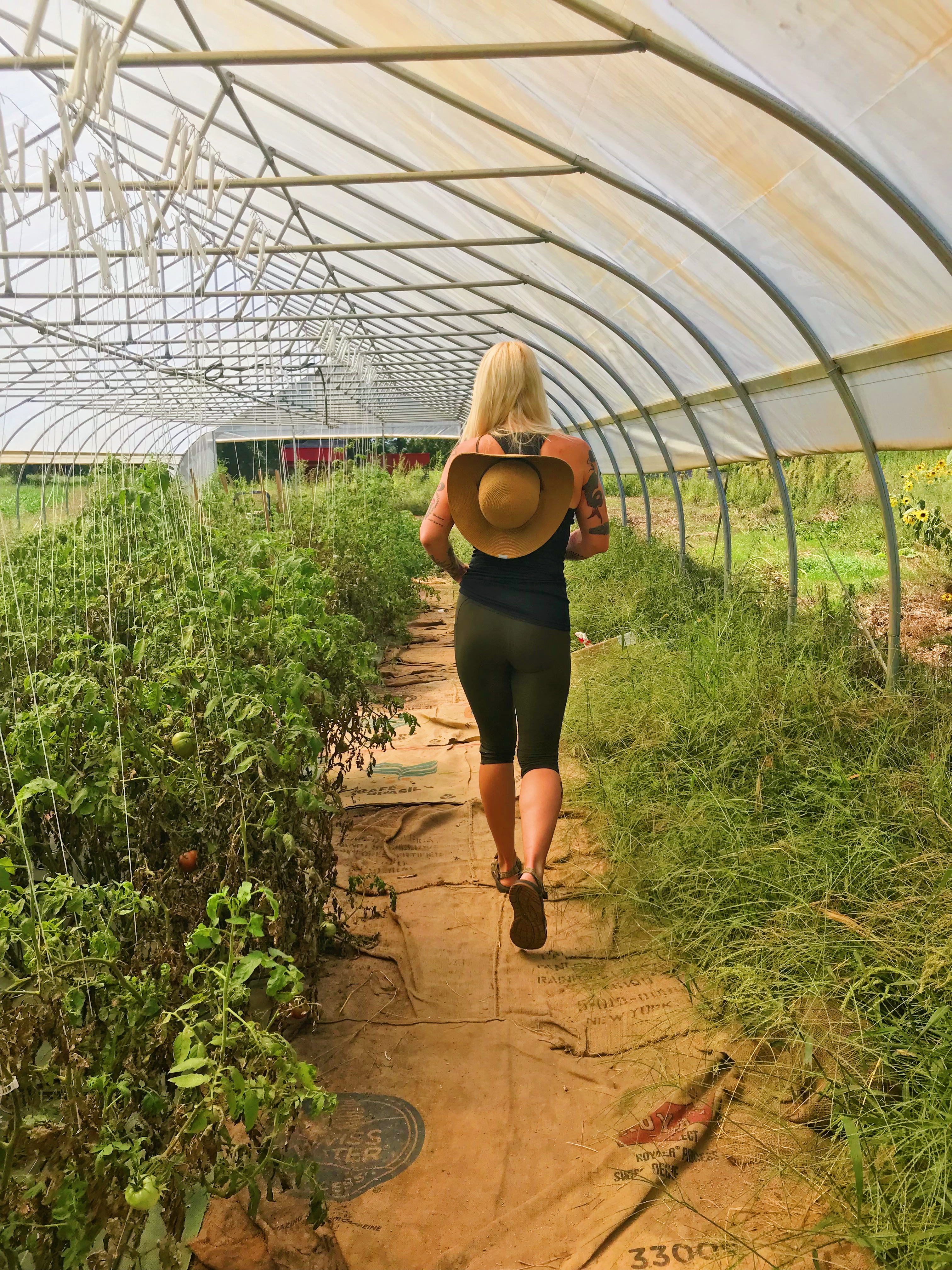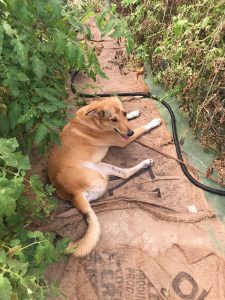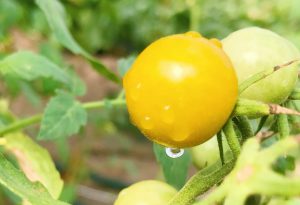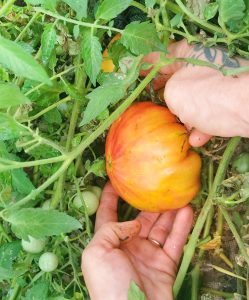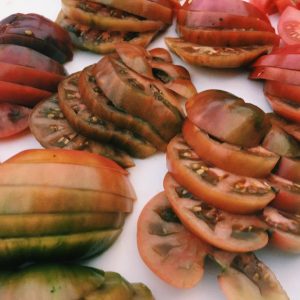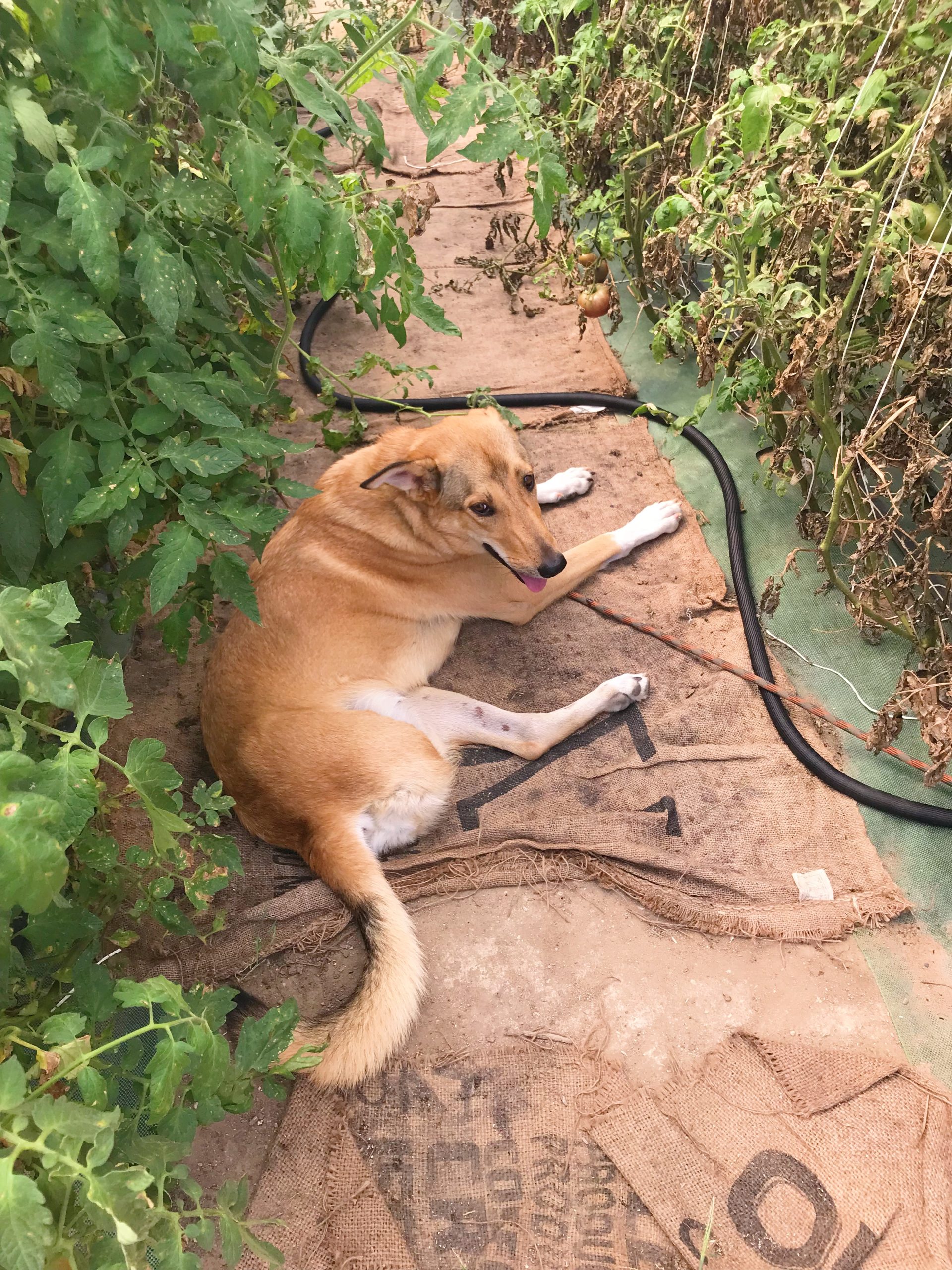
How Tammie Gilfoyle champions the stories behind her seeds.
by Marcy Harris
Sometimes it takes just an hour or two of visiting a farmer to give you a glimpse into the love and service that goes into growing our food. A recent afternoon with Tammie Gilfoyle, the farmer behind Tamchop Farm in Dexter, gives me more than just a glimpse. It’s an invitation to become part of an ongoing story that I realize is much bigger than farm to table. There is more beyond the farm that we don’t want to miss.
Rethinking farm to table.
Farming is undoubtedly a crucial source of food, yet the stories behind much of what we eat begin before the farm. They start with the seed. Seeds have come a long way. They travel across oceans and time. Their stories are shaped by visions of how what is grown will end up on our plates.
A perfect example is the sweet Jimmy Nardello frying pepper, one of Tammie’s favorites. The seeds migrated to Connecticut from the mountains of Italy with the Nardello family in 1887, and one of the sons in the family replicated the terraced gardens the family kept in the old country. The pepper is traditionally dried, and did well for keeping through the winter in Connecticut so it could be fried up as needed.
The farmer serves us by growing our food, but they also serve the seed to bring each vision to fruition, by continuing their stories. Out in Dexter, MI, Tammie is a leading agent of service in the local agricultural scene. Just like her boyfriend Ari Weinzweig, CEO of Zingerman’s, loves to connect our community with the stories behind food, Tammie loves telling us the stories behind her seeds. She does so by bringing her farm goodies to local businesses, including the Roadhouse, and to the Westside Farmer’s Market every Thursday during the market season. Tammie is also currently growing heirloom tomatoes for our upcoming annual Tomato Special Dinner, and we can’t wait to taste the stories behind the varieties she is nurturing.
The vision in the hoop house.
As I pull up to Tamchop Farm, I am greeted by towering sunflowers basking alongside rows of squash and melon. It doesn’t take me long to spot Tammie in the hoop house, her long blonde hair and signature sunhat giving her away. She is tending to her tomatoes with her graceful dog, Eva, by her side. It’s a peaceful, welcoming sight.
Walking into the hoop house, I am wrapped up in my favorite aroma of pungent basil. Tammie grows a ton of the Genovese broadleaf variety for a local brewery Homes for their Blurb Sherbet, a blueberry basil sour ale that has gained national attention. There is also peppercress, and a variety of arugula called Astro that is one of Ari’s favorites. In fact, he calls her while we are chatting to ask her if she’s bringing any home.
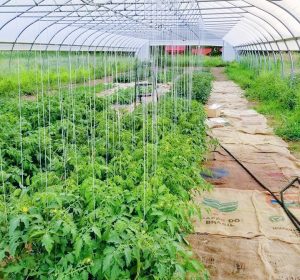
As much as I love these things too, there is something else that is stealing the show in my opinion. For me, it’s the tomato plants. You can see right away the amount of work and dedication Tammie has put into growing them. As I stand in the entrance, I look down orderly rows of the plants. They are pinned to a trellis stretched across the length of the hoop house by these little gadgets called tomahooks. Tammie explains that when they get tall enough, she can lower the trellis, hook the plants, and slide them over, a process called “lean”. The result is stunning.
Tammie also uses garden mats for the plants, which help with weeds and controlling the temperature of the soil. A carpet of burlap bags from Zingerman’s Coffee Company between rows and beds also keeps the weeds at bay and provides a warm and welcoming walkway. It all seems simple and straightforward enough, but every solution stems from a problem.
“When I first cleaned out the hoop house, there were wheelbarrows full of weeds,” Tammie recollects. “I tilled, put down the manure, planted the seeds, and as soon as the water hit the soil there was more grass everywhere. I almost gave up.”
 But she didn’t give up, and as far as I can see, Tammie has achieved her vision in the hoop house. The proof is in the colorful jewels hanging in front of me. Cherokee Purples, Gold Medals, Moldovan Greens…the heirloom tomatoes stretch across a canvas of vines. It’s art. And the artist works hard for this, yet she loves every minute of it. She knows that every seed she’s planted has come a long way to get here, and she is honored to cultivate them into the fruit we look forward to every summer.
But she didn’t give up, and as far as I can see, Tammie has achieved her vision in the hoop house. The proof is in the colorful jewels hanging in front of me. Cherokee Purples, Gold Medals, Moldovan Greens…the heirloom tomatoes stretch across a canvas of vines. It’s art. And the artist works hard for this, yet she loves every minute of it. She knows that every seed she’s planted has come a long way to get here, and she is honored to cultivate them into the fruit we look forward to every summer.
The story behind the farmer.
Tammie’s own journey began years ago. On a run in San Francisco, she saw two women on their hands and knees gardening, and she knew right then that she wanted to be like those women. While this was a pivotal moment for Tammie, her inspiration reaches back farther to when she was a seedling herself. Tammie grew up in California with parents who loved gardening, so watching things grow from seed has always been a magical experience. Her dad loves to grow tomatoes, and insists that they only be eaten with salt, not cooked. This profound respect for the integrity of earth’s bounty, for each and every plant and the fruit it has to offer, has been integral to how Tammie approaches her farming.

“My inspiration comes from growing up with a family that values food and growing things of all types,” Tammie says. “This is all a dream I couldn’t almost even dream. I became a client gardener, and I can now be on my hands and knees like those women in San Francisco. It feeds my need to serve.”
She does so by learning every day, by understanding how to care for all of her plants, and by putting in a ton of work to do so. Tammie works in a community of farmers who all support each other. With the advice of fellow farmers like Stephen Lamberti of Rio Rosa and Jill and Nate Lada from Green Things Farm, Tammie is able to keep her vision going for growing her plants and addressing the issues that can pop up with farming. She keeps mentioning, “I’ve learned so much. No one makes you feel like you are doing a bad job, they all deal with the same problems.”
Serving the seeds.
Tammie buys her seeds from Ann Arbor Seed Company, Johnny’s Seeds, and Uprising Organics Seeds in Washington. She gets a lot of information from all of them, including not only how to grow her heirlooms, but also where they originated from. Knowing their stories seems to connect her even more with her plants. Just as her friends all form a community and offer support to each other, Tammie also believes in being encouraging of her seeds. She whispers sweetly to her tomato plants “You are doing a great job!”
Seeds struggle like people, and have a history. Just like people, the more they struggle, the more they persevere, the more they have to offer. They carry forth a vision of what they can bring to a plate, and it becomes crucial for the farmer to give them what they need to keep the qualities of each seed intact. It’s these qualities that will determine how the resulting crop will be prepared, what it will be served with, and how it should be eaten.
As we walk the rows, Tammie pulls a tomato out here and there for me to taste, and based on the flavor and texture she has worked so hard to capture, explains to me how it should be enjoyed. The soft, fuzzy Garden Peach tomatoes are my favorite, and while I could eat them all day by themselves, Tammie recommends stuffing them with cream cheese and scallions. Oh my.
I am glad that Tammie has persevered like her seeds, and not just because she is feeding me tomatoes. Her vision has become a reality, and she talks about the people who have helped her get here, who helped nurture her dream and keep it intact.
“When you write a vision and show it to people, they help you get there. The forces of the universe come together. People believe in me. Ari believes in me. He offers hope”.
And here we are, admiring how the hope of one woman in Dexter has become part of the stories behind her seeds, and in turn is making sure these stories are passed on. Look forward to having her tomatoes on your plates at the Tomato Dinner on September 12th!
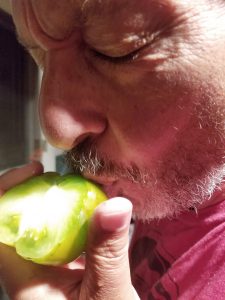
Just a few of the stories behind the tomatoes in the hoop house.
Gold Medal:
These beauties were originally named Ruby Gold in 1921 by John Lewis Child, and understandably so. This treasure boasts a stunning sunny orange with red marbling, and each fruit is worth its weight in gold at just about 1 pound. It was mentioned in Child’s catalog, which may have been the first seed catalog business in the U.S. These juicy, meaty babies were renamed Gold Medal by Ben Quisenberry, an ardent rescuer of heirloom seeds, in his catalog in 1976. Eat them fresh on their own, on salads, and even on sandwiches.
Moldovan Green:
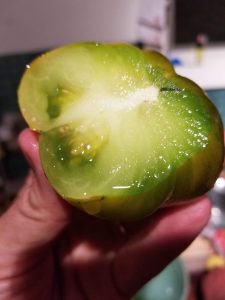
A vibrant green with golden kissed hues, this beefsteak-style tomato ripens to 8-12oz and boasts a bright, rich, and mildly fruity flavor. This baby deserves to have dishes created to have it star in, even a simple, yummy caprese. Or try it in a chunky salsa! It is a rare heirloom from Moldova, a little-known country straddling the border between the Ukraine and Romania. The original seed came to the U.S. via Glenn Drowns of Iowa, then was introduced in the Seed Savers 1998 Yearbook.
Garden Peach:
This darling is a smaller tomato, but with a big, rich flavor. It’s appropriately named because the warm yellow skin offers a soft, subtle fuzz, like a peach, with a glowing pink blush when fully ripe. Elbert S. Carman, owner and editor of The Rural New-Yorker magazine, is credited with the origin of peach tomatoes due to his plant breeding work in 1890. Originally named “White Peach”, the unique fruit was soon after listed by seed companies and by the early 1900s, their own breeding work produced several new “peach-type” varieties. I love eating these straight from the vine, but I can’t wait to try them stuffed with Zingerman’s Creamery cream cheese!
Cherokee Purple:
Don’t let the irregular shape of this variety deter you from tasting it’s sweet yet subtly smoky flesh. The skin looks like autumn, with dark green fading into purplish red hues. Tomato connoisseur and chemist Craig LeHoullier acquired the seeds from John D Green of Sevierville, Tennessee in 1990, who claimed that they had been in the family for over 100 years and were a gift from the Cherokee tribe. Upon growing the tomato and noting its purplish coloration, Craig named the variety Cherokee Purple and sent it to Jeff McCormack of Southern Exposure Seed Exchange. They are perfect for slicing, and their rich, robust flavor demands to be savored fresh in simple dishes.

